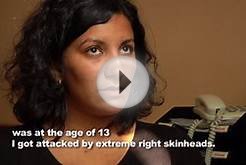Is free and compulsory from ages 6 to 15. In 1996, the gross primary enrollment rate was 104 percent, and in 1995, the net primary enrollment rate was 86.9 percent. Primary school attendance rates were unavailable for the Czech Republic as of 2001. While enrollment rates indicate a level of commitment to education, they do not always reflect children’s participation in school. Many ethnic Roma children attend school less regularly and attend “special schools” for mentally disabled or socially maladjusted individuals. While the public school system is free and does not create significant financial barriers for children to attend, the private schools, particularly in Prague, are largely financially inaccessible for the majority of local population and thus also represent an element of exclusion, educating children separately from the rest of their peers. For the overview of such private schools see various expat webpages, for example
The Czech school system has four degrees:
- Preschools - (from 2 to 5 years old)
- Primary (elementary) - (from 6 to 15 years old, mandatory)
- Professional secondary (high) schools, grammar schools (gymnasium), vocational schools and courses
- Universities
Education in the Czech Republic is free, but there are some exceptions like preschools which are paid by parents, though only the last year before entering elementary school is free. There is also a long-standing talk about paying fees for attending university. However, as education is free, parents only pay for textbooks, basic equipment and food if their child eats in a school cafeteria. The state pays health insurance for students up to 26 years of age.
Primary schools[edit]
The primary (elementary) school (Czech: základní škola) consists of nine grades which are divided to two substages.
1st stage[edit]
The first stage contains first 5 years of education. Children are taught by only one teacher for all subjects (sometimes there is a second teacher for foreign language or Physical Education). The subjects taught at this stage are Czech, 1st foreign language (mostly English), Mathematics, Computer Science, Basics of History and Geography, Basics of Sciences, Arts, Music, Physical Education and Handworks.
The first stage school is usually in every town and village. In small villages with a low number of pupils, several grades (2 or 3) can be taught in one class.
Elementary and Practical Schools[edit]
Predecessor of this type of schools were Special Schools. These schools were given over to children with mental or developmental handicap who were not able to follow education in Elementary Schools. The subject matters were restricted. In consequence, Special Schools leavers could not continue on all types of secondary education schools.
To be able to be accepted to this school, a reference of a psychologist of pedagogy and parents’ agreement were required. However, many children of Romany ethnicity studied these schools, even though they had an average IQ; the lack of tested abilities were caused by their social background rather than by their mental abilities. It was criticised by European Court of Human Rights.
Elementary and Practical Schools are, as the Special Schools, given over to children with hard mental handicap and still has restricted subject matters. The problem of high number of Romany ethnicity pupils continues. On the contrary, "integrated education", i. e. education of handicapped children in ordinary schools (with assistance of a special teacher), is more and more common in the Czech Republic.
Secondary education[edit]
After obligatory Elementary Schools, pupils can continue on higher type of schools that vary in number of years, in type of qualification and in possibility of university studies.
Practical Schools are continuation of Elementary and Practical Schools (the word practical in name of these schools refers to Practical Schools, that are usually taught in the same school as the special elementary education). They offer 1 or 2 years course. The education is mainly practical oriented and its aim is to teach students to be self-sufficient and to give them abilities for some easier auxiliary works.
2 years vocational course offer qualification without vocational certificate.
Vocational course lasts 2 or 3 years. In the end, student must take qualification exam and obtains vocational certificate. These courses are divided into two subtypes. "Easier" courses’ graduates can work only in qualified auxiliary professions and cannot be self-employed. The other one’es graduates have a higher qualification and can be self-employed.
Vocational school with maturita lasts 4 years. In the end, student must take qualification exam (obtains vocational certificate as from vocational course) and take maturita exam; to be graduate, student must succeed in both exams. As they have taken maturita exam, graduates can continue their studies on university.
Professional high school lasts 4 years and students must take maturita exam. There is a huge variety of offered branches, mainly industrially oriented (such as technical chemistry or electrical engineering), but also oriented in agriculture, health service, IT or economy.









